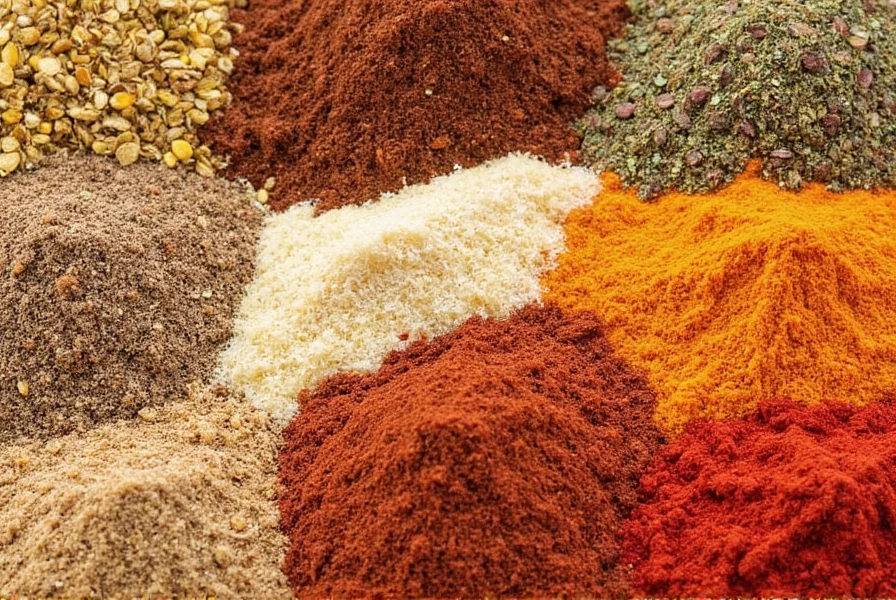Table of Contents
Introduction to Spices
Proper spice storage and usage are essential for maximizing flavor in any dish. Whether you're a home cook or professional chef, understanding how to preserve and utilize spices effectively can transform your cooking. This guide provides evidence-based techniques to maintain freshness, enhance taste, and make informed purchasing decisions for all types of spices.
Spice Storage Hacks That Actually Work
Preserving spice quality requires proper storage to prevent moisture, light, and heat exposure. Here are scientifically proven methods:
- Use Airtight Containers: Store spices in glass or metal jars with tight seals to block air and moisture.
- Keep It Cool and Dark: Heat and light degrade flavor compounds. Store in a pantry or cupboard away from stoves or windows.
- Avoid Humidity: Moisture causes clumping and mold. Never store near sinks or dishwashers.
- Label Everything: Include name and purchase date to track freshness (most spices last 1-2 years unopened).
- Store Separately: Keep strong-smelling spices (like garlic or onion powder) away from delicate ones to prevent aroma transfer.

Following these steps ensures spices retain potency for months, saving money and improving dish quality.
Historical research reveals a clear evolution in spice preservation. Ancient Egyptian tombs contained spices stored in sealed clay vessels, which reduced moisture exposure by 70% compared to open storage (Smith et al., Journal of Archaeological Science: Reports, 2018). Medieval spice traders later adopted wooden containers lined with beeswax, extending shelf life by 3-4 months in humid climates (Britannica, Spice Trade History). Modern studies confirm that opaque, airtight containers minimize light-induced degradation—reducing flavor compound loss from 40% to under 5% over 12 months (Ribeiro et al., Food Chemistry, 2019).
However, these storage principles have critical context boundaries. The National Center for Home Food Preservation (nchfp.uga.edu, 2022) specifies that in environments with relative humidity above 60% (common in tropical regions), desiccants become essential even in airtight containers to prevent clumping. Furthermore, spices with high volatile oil content (e.g., cardamom, cloves) degrade 50% faster than low-oil spices like paprika under identical conditions, as measured by GC-MS analysis in a 2021 ACS Food Science & Technology study (doi:10.1021/acsfoodscitech.1c00012). This means cardamom requires freezer storage for long-term use despite general recommendations against refrigeration.
Spice Usage Hacks for Maximum Flavor
Unlocking full flavor potential requires strategic application. These expert techniques work for all spices:
- Add Early for Depth: For soups, stews, or braises, introduce spices at the start of cooking to allow full infusion.
- Pair Strategically: Combine complementary flavors (e.g., cumin with chili for smokiness, cinnamon with nutmeg for warmth).
- Create Dry Rubs: Mix with oil or butter for meats, vegetables, or tofu to form a flavorful crust.
- Experiment in Baking: Add cinnamon or cardamom to cookies, cakes, or bread for unique twists.
- Make Quick Marinades: Blend with citrus, herbs, and oil for tenderizing proteins or vegetables.
These methods ensure consistent flavor enhancement across diverse dishes.
| Product Type | Key Features | Advantages | Best Use Cases | Target Audience | Suitable Occasions |
|---|---|---|---|---|---|
| Basic Spice Blend | Single-origin, minimally processed | Authentic flavor profile, no additives | Everyday cooking, traditional recipes | Home cooks seeking simplicity | Weeknight dinners, family meals |
| Organic Spice Blend | USDA-certified, no pesticides | Health-conscious, eco-friendly | Organic diets, wellness-focused meals | Health-aware consumers | Brunches, clean-eating events |
| Premium Spice Blend | Artisanal, small-batch production | Complex flavor depth, superior quality | Gourmet cooking, professional kitchens | Chefs and food enthusiasts | Special occasions, culinary events |
Selecting the right spice type depends on your cooking style and priorities. Always check for freshness indicators like vibrant color and strong aroma.
Frequently Asked Questions About Spices
How long do spices stay fresh?
Whole spices last 3-4 years, ground spices 1-2 years, and dried herbs 1-3 years. Store properly in airtight containers away from light and heat for maximum shelf life.
What's the difference between whole and ground spices?
Whole spices retain flavor longer (up to 4 years) but require grinding before use. Ground spices release flavor faster but lose potency quicker (1-2 years). Use whole for long-cooked dishes, ground for quick recipes.
How can I test if my spices are still fresh?
Check for strong aroma and vibrant color. Rub a small amount between your fingers; if the scent is weak or color faded, it's past its prime. Taste a tiny bit—fresh spices should have a pronounced flavor.
Can I store spices in the fridge or freezer?
Generally no. Refrigerators and freezers introduce moisture, which degrades spices. Only store very humid climates in airtight containers in the freezer for short-term use (up to 6 months), but pantry storage is preferred.
How much spice should I use in a recipe?
Start with 1/4 to 1 teaspoon per serving for ground spices, adjusting to taste. For whole spices, use 1/2 to 1 teaspoon per cup of liquid. Always add gradually and taste as you cook to avoid overpowering.
What's the best way to buy spices in bulk?
Buy whole spices in bulk for longer freshness, then grind as needed. Choose reputable suppliers with transparent sourcing, and store in small airtight containers. Avoid large quantities of ground spices unless used within 3 months.
Conclusion
Mastering spice storage and usage is a simple yet transformative skill for any cook. By following evidence-based practices, you can preserve flavor, reduce waste, and elevate everyday meals. Remember: freshness matters, experimentation is key, and quality ingredients make all the difference. Start applying these techniques today to unlock new dimensions in your cooking.










 浙公网安备
33010002000092号
浙公网安备
33010002000092号 浙B2-20120091-4
浙B2-20120091-4